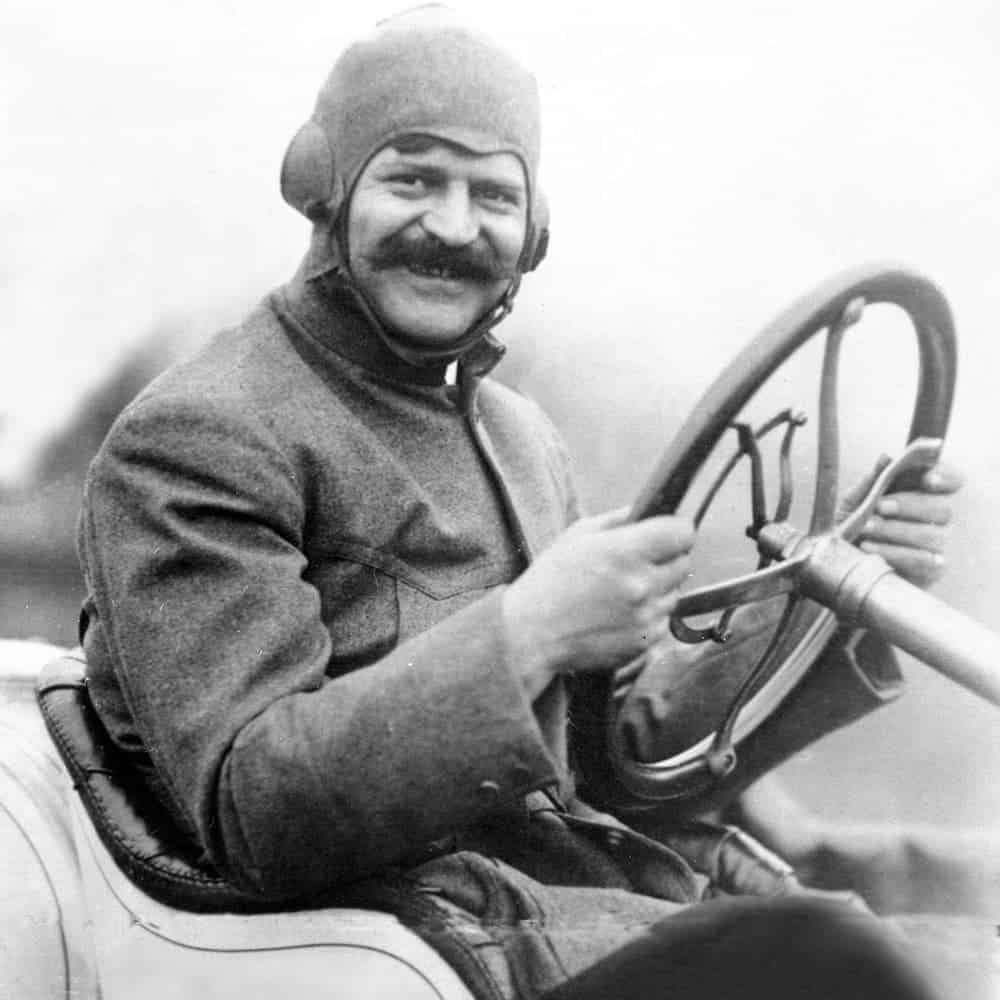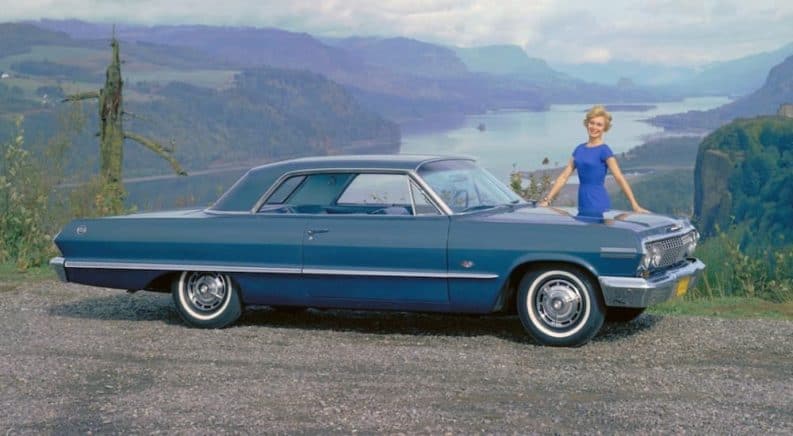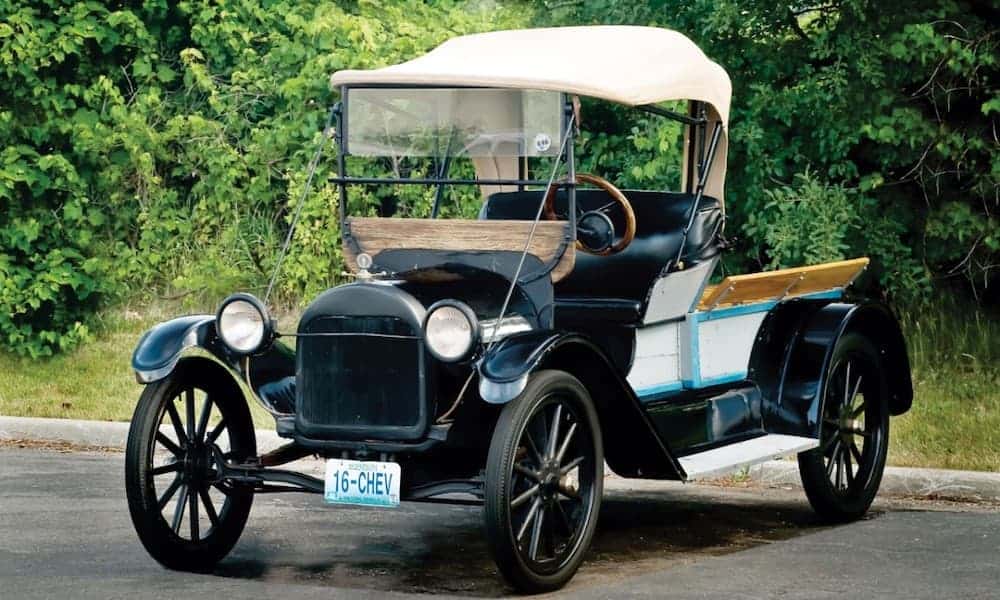If you have ever driven a Chevrolet, or have ever stepped onto a Chevy dealership, you may have asked yourself at least once: ‘what is the history of Chevy?’ It is difficult to imagine a manufacturer as large and widely celebrated as Chevy ever having a humble beginning. From impressive rides like the utility champion Chevy Blazer to the sleek and iconic Chevrolet Corvette, the Chevy brand appeals to a broad audience designing vehicles that you won’t be able to find anywhere else. Although, like almost all modern car manufacturers, the Chevy brand began with a simple idea to create fantastic and reliable cars. With a history over a century-long, Chevrolet dealerships everywhere owe their existence to the dedication and brazen creativity of two men, and a long line of brilliant cars. In this post, we’ll summarize the long and colorful history of Chevrolet, and how a race car driver and an automotive engineer started one of the largest car manufacturers in the industry today.
The Imagination of Two Men
If you ever visit a Chevy dealership, chances are you’ll find an extensive selection of top-of-the-line vehicles ranging from comfy SUVs to fuel-sipping electric hybrids like the 2019 Chevy Volt. That said, Chevy hasn’t always been the impressive household name that it is today. In fact, the entire Chevy brand can be traced back to the seemingly wild ideas of two men Louis Chevrolet and William Durant.

Once upon a time, Chevrolet was known as the Chevrolet Motor Company and was formed by the partnership of these two men. William Durant was an automotive engineer with plenty of brilliant ideas, while Louis Chevrolet was a well-known race-car driver. Together they formed the Chevrolet Motor Company in 1911. While the company they created would go on to champion a diverse lineup of incredible vehicles, the two would go their separate ways in 1915. Their separation can be attributed to a disagreement the two men expressed over pricing and design. Durant wanted their fledgling motor company to design vehicles for the everyday driver, while Chevrolet only wanted to produce inaccessible luxury vehicles.
Chevrolet would sell his shares of the company to Durant, yet the company would retain the race-car driver’s name. In the early days, Chevrolet Motor Company was a little fish in a big pond. These small beginnings wouldn’t stay that way, as Chevrolet moved in to face off against the company that commanded widespread attention, and in many ways founded the modern-day auto industry, the Ford Motor Company.
Chevrolet Challenges a Giant
Chevrolet dealerships wouldn’t be what they are today had it not been for their early opposition of the Ford Motor Company. While founded in 1911, Chevrolet didn’t truly enter the ring against Ford until 1914 with the production of the 1914 Royal Mail Roadster and the Baby Grand touring car. While both of these vehicles put Chevrolet on the grand stage, the company didn’t truly take a shot at Ford’s famous Model T until the 1916 production of the Chevrolet Four-Ninety. Quite different than any vehicle you can find at a modern Chevy dealership, the Chevy Four-Ninety offered an affordable option for drivers at the time, averaging at around $820 in 1921. The Chevy Four-Ninety remained in production from 1915 until 1921 and established the Chevrolet Motor Company as a direct challenger to the prolific Ford brand.
By the time the Chevrolet Four-Ninety was cycled out of production in 1921, Chevrolet had factories scattered across the country in places like Flint, Michigan and New York City. The success of Chevrolet was hard to shake. For instance, in 1922, Ford’s head of manufacturing left the company to become Chevrolet’s production chief and later was promoted to the Vice President of Operations. While this success was celebrated at the time, they forwarded a downturn that would be experienced by almost every business in the country.
Overcoming the Challenges of the Great Depression
Today Chevy dealerships are flourishing, offering a wide range of cars for a wide range of car buyers. Although, it is impossible to see Chevrolet as the automotive giant that it is today without mentioning the economic downturns of the Great Depression. During this period, businesses everywhere struggled, that said Chevy somehow remained above the downward curve. The Great Depression lasted from 1929 to 1939 and struck businesses countryside. With Chevy’s initial focus to bring car buyers an affordable option is what allowed the car manufacturer to stay afloat. One of the ways that they survived through the Great Depression was through clever advertising. Through posters and radio, Chevrolet managed to continue to woo car buyers and drive profits through this economic slump.
From then on, Chevrolet solidified its place in the industry as a low-priced alternative, competing against Chrysler’s formed company, Plymouth and Ford. These auto manufacturers were so prolific in their design of affordable vehicles that they were given the charming moniker the “low-priced three.” Throughout the following years and decades, Chevrolet made many name building accomplishments. Such as launching the Standard Six in 1933 which was touted as the cheapest six-cylinder vehicle on the market at the time.
Chevrolet’s success through the Great Depression allowed them to lay the groundwork for future successes and made a significant impact on the automotive industry throughout the 50s and 60s. One of Chevrolet’s most famous vehicles was first introduced during this period, the 1953 Chevrolet Corvette. The original Chevrolet Corvette was first intended to only be used as a show car for the 1953 New York Auto Show. But little did the company know that the Corvette’s charming allure would push Chevrolet into full-fledged production of the sports car.
On into the 21st century, Chevrolet continued to be a heavy hitter in the industry. During the 70s, in particular, the standard Chevrolet was considered one of the best selling car brands in America. Although the Great Depression wouldn’t be the only hurdle to Chevy dealerships across the country.
2007 To Today
In 2007, the world faced another economic crisis. Spurred by the burst of the American housing bubble, this crash affected auto industries as well. This time, Chevrolet wasn’t spared from the brunt of this new hurdle. That said, Chevrolet still managed to recover, refusing to be put out of commission. Chevrolet survived this crash by focusing on cars that weren’t just affordable but fuel-efficient as well to compete with vehicles arriving from overseas. One vehicle to enter the lineup after the 2008 economic crisis was the 2010 Chevy Volt, a plug-in hybrid, which earned the 2012 North American Car of the Year, European Car of the Year, and World Green Car of the Year. In the summer of 2016, the Chevy Volt was considered the third-best-selling plug-in vehicle in history, surpassing 100,000 models sold. Chevy continued their push of fuel efficiency with the release of the Chevy Bolt in 2017, which earned Motor Trend’s Car of the Year Award and was mentioned in Time Magazine’s Best 25 Inventions of the Year.
Today, Chevrolet continues to push the envelope. In Chevy dealerships across the country, you’ll find vehicles that are affordable, fuel-efficient, and charmingly modern. There is a reason why Chevrolet has withstood the test of time and continues to be one of the largest brands on the market. All of this began with one simple idea, to provide excellent affordable cars to every kind of driver.






